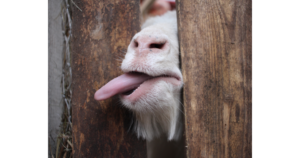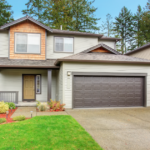Privacy fences are a common feature in residential properties, providing homeowners with seclusion and security. As dog owners, you often wonder if these structures have any impact on our furry companions. Do dogs like privacy fences?
How do these structures benefit their well-being? In this article, we will delve into the world of canine preferences, exploring whether dogs truly love privacy fences and uncovering the advantages that these fences bring to their lives.

Understanding Privacy Fences
Table of Contents
TogglePrivacy fences are designed to offer seclusion and privacy within a property. They typically feature solid panels without gaps, blocking the view from the outside. This creates a sense of security and containment, which can have various effects on dogs’ behavior and well-being. Let’s explore some key aspects of privacy fences and their differences from other types of fencing.
Privacy Fence Definition
A privacy fence is a type of fencing that aims to create a private and enclosed space. It is constructed using solid materials that prevent visibility from the outside. This feature can be particularly relevant for dogs that may prefer a sense of privacy and safety within their designated territory.
Privacy Fence vs Chain Link
In contrast to privacy fences, chain link fences have visible gaps between wires, offering little to no privacy. Dogs may have differing reactions to these two types of fences due to the lack of seclusion provided by chain link fencing. Privacy fences, with their solid construction, can cater to dogs’ desire for a private and secure environment.
Privacy Fence vs Picket Fence
Picket fences are another common fencing option, known for their charming and decorative appearance. However, unlike privacy fences, picket fences have gaps between the pickets, which do not provide the same level of seclusion. Dogs that seek privacy and clear boundaries may prefer privacy fences over picket fences.
Privacy Fence vs Shadowbox Fence
Shadowbox fences are a middle ground between privacy and picket fences. They offer partial seclusion due to their alternating pickets on each side of the fence. While they may provide some privacy, they might not fully meet the needs of dogs that crave a completely enclosed and private space.
Do dogs like privacy fences? Key Factors
Several factors influence how dogs perceive and interact with their environment. Understanding these factors can help us comprehend why privacy fences can be beneficial for our furry friends.
Privacy and Comfort
Dogs are naturally den animals, seeking enclosed and cozy spaces for rest and relaxation. Privacy fences can mimic the feeling of a secure den, promoting a sense of comfort and well-being in dogs.
Sensory Stimulation
Dogs have highly sensitive senses and can become easily overwhelmed by external stimuli such as passing pedestrians, other animals, or noisy vehicles. Privacy fences help reduce such visual and auditory distractions, creating a calmer environment for dogs.
Territory and Boundaries
Dogs have a territorial nature, and privacy fences clearly define their living space. These fences serve as physical boundaries, giving dogs a sense of security and ownership over their designated area.
How Privacy Fences Benefit Dogs
Privacy fences offer several advantages that can positively impact dogs’ behavior and overall well-being. Understanding these benefits can help us appreciate the significance of privacy fences for our furry companions.
Privacy Fence and Behavioral Calmness
By reducing external stimuli and distractions, privacy fences contribute to dogs’ behavioral calmness. Dogs can feel more relaxed and less anxious in an environment where they are shielded from passing activities and unfamiliar sights and sounds.
Privacy Fence and Reducing Distractions
Dogs are naturally curious beings, and external activities beyond the fence can easily grab their attention. Privacy fences help prevent dogs from becoming overly excited or agitated by such distractions, allowing them to focus on their immediate surroundings.
Privacy Fence and Safety
One of the most crucial benefits of privacy fences is enhanced safety for dogs. These fences keep dogs securely contained within the property, protecting them from potential dangers outside the fence. This containment reduces the risk of accidental escapes and ensures dogs remain within their designated area.

Designing and Building Privacy Fences for Dogs
When considering installing a privacy fence for the well-being of your dogs, several design and construction factors should be taken into account to optimize their experience.
Privacy Fence Height Limit and Spacing
The height and spacing of privacy fences are essential factors in ensuring the safety and containment of dogs. The fence height should be sufficient to prevent dogs from jumping over it, while the spacing between panels should not allow them to squeeze through or get stuck.
Privacy Fence Post Depth and Spacing
Sturdy fence posts are crucial for the stability and durability of privacy fences. Proper post depth and spacing are essential to support the weight of the fence and withstand external forces.
Privacy Fence Picket Spacing
For privacy fences with pickets, the spacing between the pickets should be carefully considered to maintain the desired level of privacy and containment.
Privacy Fence Wood vs Vinyl
Choosing between wood and vinyl materials for privacy fences can impact the fence’s longevity and maintenance requirements. Both materials have their advantages, and the decision should be based on factors such as climate, budget, and personal preference.
Privacy Fence Rail Spacing
In certain privacy fence designs, the spacing between horizontal rails is an important consideration for the fence’s overall strength and appearance.
Legal and Practical Considerations
When planning to install a privacy fence for your dogs, it is essential to consider legal regulations and practical aspects to ensure a smooth and compliant installation process.
Privacy Fence Regulations and Rules
Local regulations and homeowners’ association rules may dictate the specifications, height limits, and placement of privacy fences in residential areas. Familiarizing yourself with these rules can prevent potential legal issues and the need for modifications.
Privacy Fence Labor Cost and Estimates
Determining the labor cost and obtaining accurate estimates are important steps in budgeting for a privacy fence installation. Obtaining quotes from reputable fence builders can help you make informed decisions.
Privacy Fence Repair Cost
Maintaining a privacy fence is essential for its longevity and effectiveness. Understanding potential repair costs can help you plan for maintenance and address any issues promptly.
Privacy Fence Without Permit: Knowing the Risks
Building a privacy fence without obtaining the necessary permits can lead to legal ramifications and potential fines. Always check local building codes and secure the required permits before starting the installation.
Privacy Fence Height Restrictions
Some neighborhoods may have height restrictions for fences, including privacy fences. Adhering to these height limitations ensures compliance with local regulations.
Privacy Fence Etiquette and Neighbors
Good relations with neighbors are crucial when installing a privacy fence. Open communication and consideration for your neighbors’ views can prevent potential disputes and promote a harmonious living environment.
Creative Privacy Fencing for Dogs
Privacy fences offer versatility in design, allowing for creative and unique options that cater to dogs’ needs and enhance the overall aesthetic of the property.
Conclusion:
Repurposing old doors to create a privacy fence adds a touch of creativity and uniqueness to your property. This DIY approach allows you to personalize the fence while giving new life to old materials. In conclusion, it is evident that privacy fences can have a positive impact on dogs’ well-being and behavior.
Dogs, being den animals, naturally seek comfort and security, which privacy fences can provide by creating a secluded and safe space. These structures help reduce external stimuli, promoting behavioral calmness in dogs and allowing them to focus on their immediate surroundings.

FAQs (Frequently Asked Questions)
Q1: Do dogs prefer privacy fences over other types of fencing? A: Dogs do have a preference for privacy fences due to the sense of seclusion and security these fences provide. Privacy fences limit visibility from the outside, creating a private and enclosed space that aligns with dogs’ denning instincts.
Q2: Can privacy fences reduce anxiety in dogs? A: Yes, privacy fences can help reduce anxiety in dogs by minimizing exposure to external stimuli and distractions. Dogs in a quieter and less visually stimulating environment may experience decreased anxiety levels.
Q3: How does a privacy fence benefit a dog’s behavior? A: Privacy fences can positively impact a dog’s behavior by promoting behavioral calmness. The lack of external disturbances allows dogs to feel more secure and relaxed, leading to improved focus and less reactive behavior.
Q4: Can privacy fences prevent dogs from escaping the property? A: Yes, privacy fences act as physical barriers that prevent dogs from easily escaping the property. The solid construction of privacy fences reduces the likelihood of dogs finding escape routes.
Q5: Are there specific design considerations for building a privacy fence for dogs? A: When building a privacy fence for dogs, it is essential to consider factors such as fence height, post spacing, and material selection. Ensuring the fence is appropriately designed to cater to the specific needs and size of the dogs is crucial for their safety and well-being.







